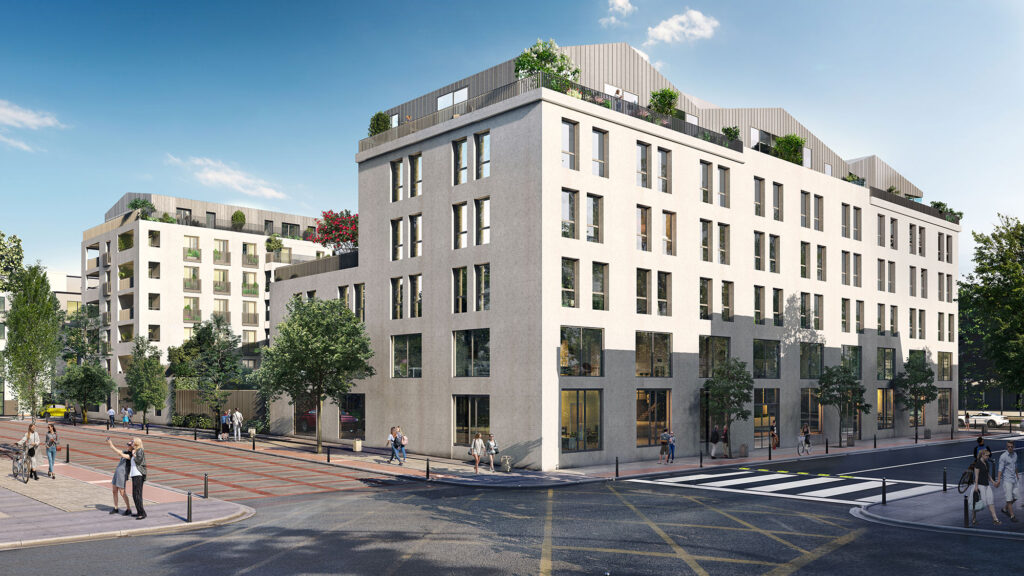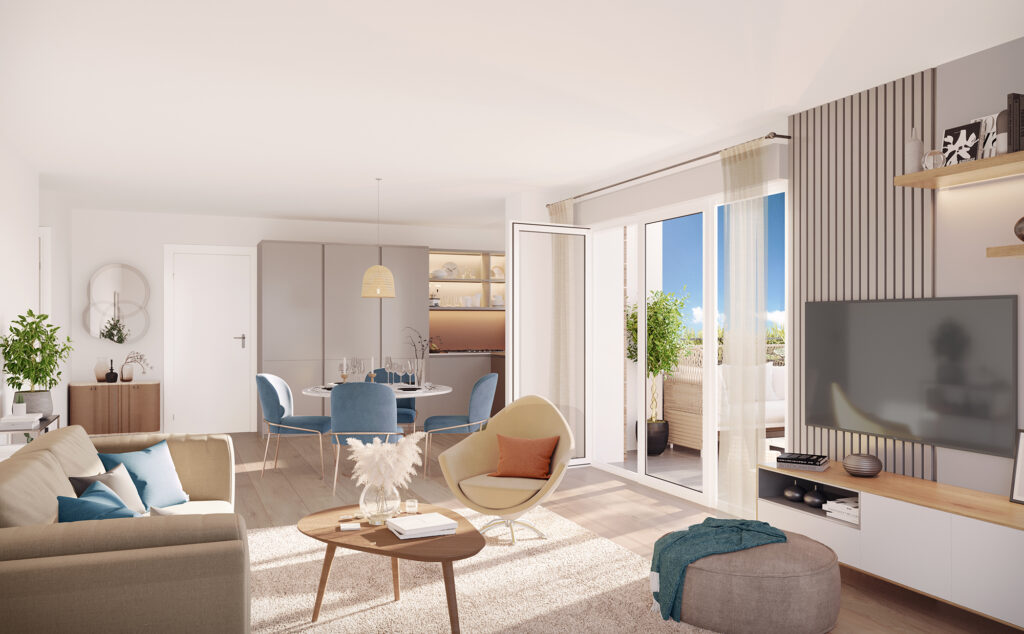The advent of virtual reality (VR) and augmented reality (AR) will mark a major turning point in the way real estate transactions are carried out. These revolutionary technologies are set to offer a host of advantages for real estate professionals and buyers alike.
By offering immersive, interactive experiences to customers, you accelerate their decision-making while gaining credibility. These innovative solutions, which are still in their infancy, have the potential to profoundly transform the way real estate is bought and sold.
Discover how VR and AR technologies will transform the various aspects of real estate development.
VR and AR to facilitate real estate transactions

Virtual reality and augmented reality offer a variety of use cases, but with a common result: speeding up the real estate sales process.
Virtual tours with VR
Virtual Reality (VR) is a technology that enables users to interact immersively with a virtual environment. In the real estate sector, it is mainly used to create virtual property tours.
These are 3D projections of properties such as houses or apartments, offering visitors an immersive, interactive experience.
VRhelps to speed up real estate transactions , thanks to the possibility of remote visits. You'll no longer need to organize frequent physical visits, saving you real time.
All you have to do is put your virtual tours online, so that interested parties can explore the property at any time.
You can offer theuse of a virtual reality headset (VR headset) to add a new dimension to immersion. This is already possible for stands at real estate shows, but with the democratization of VR equipment, potential buyers can remain comfortably at home.
They can take an aerial or pedestrian tour around the building. Since virtual tours can be taken anytime, anywhere, they are particularly useful for expanding your customer base internationally.
Visualizing a new real estate program with AR
Augmented Reality (AR) is a technology that superimposes digital elements on real-world views. This technology enables you to present a new-build property program in its real environment as part of a VEFA.
The principle is simple: the purchaser must go directly to the plot of land where the project is to be built. Using their smartphone or tablet, they can directly visualize their project in 3D and at actual scale.
This technique is called augmented reality on site at scale 1. The future buyer can visualize the real estate project before construction while physically being on site.
The possibility for future buyers to preview their home greatly facilitates communication, speeding up the completion of the work.
VR and AR will make the real estate market more accessible
The digitalization of real estate transactions is having a considerable positive impact on access to the real estate market for a wider public.
Expanding the customer base
Thanks to virtual reality, anyone interested can visualize a real estate project from their smartphone, tablet or computer. This enables you to open up to a variety of customers, such as :
- People with busy schedules: virtual tours can be consulted 24/7 to suit their availability;
- Remote customers or those living abroad: they can carry out a real estate visit from any connected device;
- Customers with reduced mobility: not only are they spared the constraints of physical visits, but they can also customize their layout to simulate arrangements adapted to their condition.
Potential reduction in travel-related costs
Thanks to VR and AR, developers and customers no longer have to incur the travel costs associated with physical visits. Virtual technology is therefore particularly beneficial for customers who need to visit several properties before making their choice.
All these advances are currently possible with virtual visits, but immersion will be even greater with virtual reality.
Virtual and augmented reality facilitate customer projection
By creating a bridge between reality and the virtual, VR and AR have a major impact on customer decision-making.
Immersion
3D visuals make it easier for customers to project themselves into their future home, thanks to the level of precision and realism offered. Coupled with VR and AR technologies, they offer potential customers an unprecedented immersive experience, giving them the impression of actually being on the premises.
In a real estate virtual tour, the user can walk through the different rooms of the house. They can rotate 360° to view every nook and cranny of the room. They can also zoom in and out on specific objects.
This total immersion offered by virtual reality helps customers to better project themselves. With a precise idea of the building's architecture, space layout and interior design, customers can easily make a decision.
It's important to emphasize that the advance of virtual technologies fosters continuous innovation. In the future, it's possible to imagine users grasping objects in the home, or even pushing furniture to apprehend different spaces.
This mixed reality will enable future buyers to play an active role in the scene they are visualizing, further enhancing their ability to project.
Project information
The use of virtual reality in real estate tours is much more widespread than that of augmented reality. Yet AR has a lot to offer in this field too.
It can complement VR to enhance customer projection. In fact, augmented reality makes it possible to obtain comprehensive information on a property in an interactive way.
The user can, for example, superimpose prices and information. This can include price per m2, demographics of the area, dates of recent renovations or the history of the building.
AR allows you to obtain information about a property, compare different properties or even research the real estate market. All this helps speed up the decision-making process.
Personalization
The ability to imagine and simulate different layout options is one way of facilitating the customer's projection into their future home. Virtual reality technologies are the ideal solution for this.
In fact, interactive virtual tours give visitors the opportunity to personalize their home to suit their needs. They can remove a partition, move an object or replace elements.
This is an effective strategy, as it allows you to demonstrate all the design possibilities offered by your real estate project.
VR and AR technologies enhance your professionalism in real estate transactions

The use of virtual and augmented reality technologies in real estate is totally reinventing your relationship with customers.
Innovative marketing
Beyond the visual and immersive experience offered by VR and AR, these technologies are also truly innovative marketing tools. Internet users now pay more attention to real estate ads that incorporate immersive technologies such as virtual tours.
Later, they'll potentially clamor for VR and AR to make decisions. Especially as this approach is less expensive than traditional real estate marketing. It boosts your sales and increases your visibility on the market, while making your business more profitable.
Improving the customer experience
Furthermore, customers assess the credibility and professionalism of real estate developers by their commitment to innovation. They feel more confident when dealing with a professional who has mastered new technologies, as this is a guarantee of a better customer experience.
Aside from VR and AR, the real estate sector continues to explore other tools such as AI and blockchain. These technological advances are at the heart of the future of real estate.
The continuing growth of interconnectivity and digitalization can only improve the user experience, simplifying real estate transactions.
To date, VR and AR are not yet widespread in the real estate world. Yet the possibilities they offer are infinite, and could boost real estate sales.
However, for all this to be possible, virtual reality tools would need to become more widespread and accessible to a wider audience. The next few years will provide the answer.
Create immersive real estate tours








